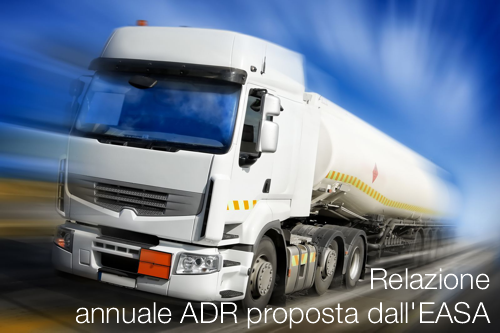
La Relazione annuale ADR proposta dall’EASA
L’EASA European Association of dangerous goods Safety Advisers, ha predisposto nel 2016 un modello di Relazione annuale ADR.
La proposta di modello per la relazione annuale del DGSA è stata inviata all’UNECE nel 2016 (ECE/TRANS/WP.15/AC.1/142, item 41).
In allegato Modello e Documento di ricezione UNECE.
______
Guidelines for Preparing the DGSA Annual Report Introduction According to sub‐sections 1.8.3.3 of the European Agreements ADR, RID and ADN, the Dangerous Goods Safety Adviser (hereinafter “DGSA”) has the duty to prepare an annual report to the management of his undertaking or to a local public authority, as appropriate, on the undertakings of their activities in the carriage of dangerous goods. ADR, RID and ADN do not specify the content of the annual report; some parties who are contracted to ADR, RID and ADN have specifications in their national legislation. EASA is of the opinion that it may be valuable for the DGSA to have a template for an annual report. In consequence EASA has created a template which respects and harmonises what is requested by the dangerous goods associations in the Czech Republic, France, Germany, Hungary, Ireland, Liechtenstein, the Netherlands, Poland, Spain, Switzerland and the United Kingdom.
This template reflects the DGSA’s duties according to sub‐sections 1.8.3.3 of the ADR, RID and ADN, and it contains what is considered by EASA to be the minimum content of a DGSA’s annual report.
The annual report is addressed to the management of the undertaking; as a consequence the DGSA’s annual report should enable management to determine whether the dangerous goods of their undertaking are being dealt with in a manner that is compliant with ADR, RID and ADN.
An annual report should cover a period of twelve months, although there is no necessity for this period to be identical to a calendar year, i.e. January to December.
The boxes 1 to 9 of the template are self‐explanatory and simple to use.
…
Fonte: EASA European Association of dangerous goods Safety Advisers

